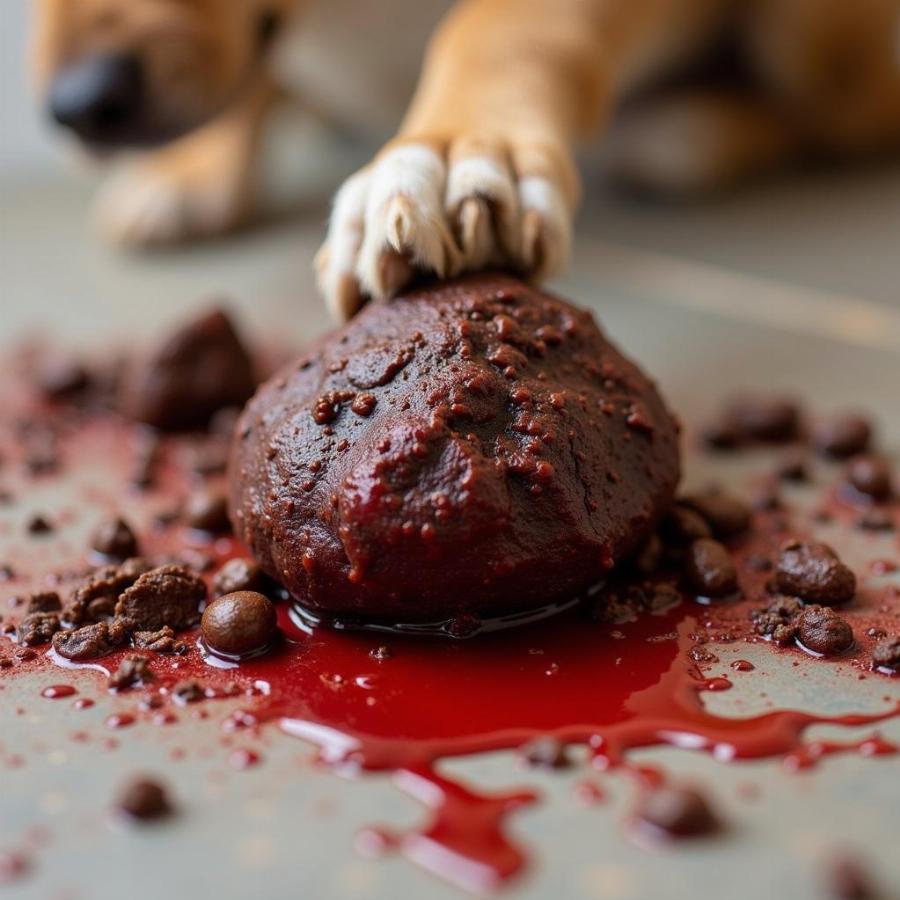Dog turd pictures. While not the most glamorous topic, understanding what your dog’s poop looks like can be crucial for their health and well-being. As a responsible pet owner, knowing what’s normal and what’s not can help you catch potential problems early and ensure your furry friend stays happy and healthy. This article delves into the world of dog poop, exploring why it matters, what to look for, and when to seek veterinary attention.
Decoding Your Dog’s Poop: What to Look For
Examining your dog’s poop might seem unpleasant, but it’s a valuable tool for monitoring their health. Consistency, color, and frequency can all indicate underlying issues. So, what should you be looking for?
-
Consistency: Ideally, your dog’s poop should be firm but not too hard. Log-like stools can indicate dehydration, while runny stools might signal a digestive upset.
-
Color: Healthy dog poop is typically brown. Variations in color, such as black, green, or yellow, can indicate problems with the liver, gallbladder, or pancreas.
-
Frequency: How often your dog poops can vary depending on their diet, age, and activity level. However, a sudden change in frequency, either an increase or decrease, warrants attention.
Why Dog Turd Pictures Matter
Why are we even talking about dog turd pictures? Because visuals can be incredibly helpful in identifying potential problems. Comparing your dog’s poop to examples of healthy and unhealthy stools can help you determine whether a vet visit is necessary.
Using Images for Early Detection
While not a replacement for professional veterinary advice, dog turd pictures can be a valuable resource for early detection. They can help you familiarize yourself with what’s normal for your dog and notice any significant changes.
When to Consult a Veterinarian
While some changes in your dog’s poop might be minor, others can indicate serious health issues. If you notice any of the following, it’s crucial to consult a veterinarian:
- Blood in the stool: This can be a sign of various conditions, from parasites to inflammation.
- Persistent diarrhea or vomiting: These can lead to dehydration and require prompt attention.
- Loss of appetite or lethargy: These can accompany digestive problems and other illnesses.
- Sudden weight loss: This can be a symptom of many underlying health issues.
 Phân chó có máu
Phân chó có máu
Maintaining Healthy Digestion in Dogs
Preventing digestive issues is always preferable to treating them. Here are some tips for maintaining healthy digestion in your dog:
- High-quality diet: Feeding your dog a balanced and nutritious diet is crucial for their overall health, including digestion.
- Regular exercise: Physical activity helps stimulate digestion and keeps things moving smoothly.
- Hydration: Ensure your dog has access to fresh water at all times.
- Probiotics: These can help maintain a healthy gut flora.
Conclusion
While the topic of dog turd pictures might not be pleasant, understanding what your dog’s poop is telling you can be invaluable for their health. By paying attention to the consistency, color, and frequency of their bowel movements, you can catch potential problems early and ensure your furry friend stays healthy and happy. Remember, when in doubt, always consult a veterinarian.
FAQ
-
What does normal dog poop look like? Normal dog poop is typically firm, brown, and log-shaped.
-
Why is my dog’s poop black? Black, tarry stools can indicate bleeding in the upper digestive tract.
-
What does green dog poop mean? Green poop can sometimes indicate that your dog has eaten too much grass, but it can also be a sign of gallbladder issues.
-
How often should my dog poop? This varies depending on factors like diet and age, but most dogs poop once or twice a day.
-
When should I worry about my dog’s poop? If you notice blood, persistent diarrhea, mucus, or a significant change in frequency or consistency, consult a vet.
-
Can I use dog turd pictures for self-diagnosis? While images can be helpful, they shouldn’t replace professional veterinary advice.
-
How can I improve my dog’s digestion? A high-quality diet, regular exercise, and hydration are key.
Beaut Dogs is your ultimate resource for all things dog-related, offering expert advice and valuable insights into the world of canine companionship. From breed information to health and training tips, we’re dedicated to providing you with the knowledge you need to be the best pet parent possible. For personalized guidance, reach out to us via Email at [email protected]. We’re here to help!